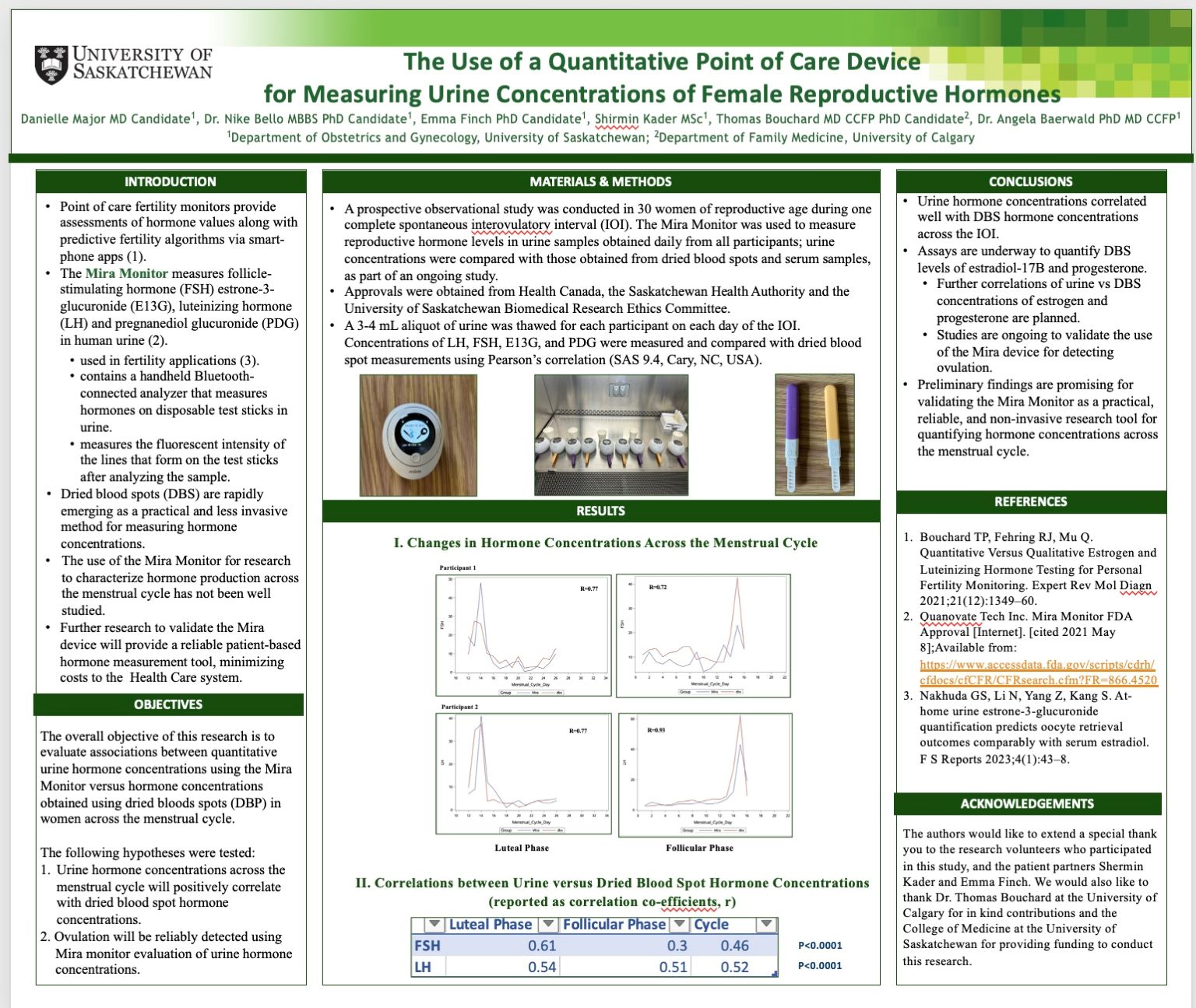
The use of a quantitative point of care urine hormone measurement device for detecting human ovulation
Danielle Major
Introduction: The Mira Monitor is a novel point of care device for quantifying hormone concentrations. The objective of this research was to test the hypothesis that urine hormone concentrations using the Mira Monitor would positively correlate with hormone concentrations obtained using dried bloods spots (DBS) across the menstrual cycle.
Methods: A prospective observational study was conducted in 30 women of reproductive age during one complete interovulatory interval (IOI). The Mira Monitor was used to quantify urine concentrations of Follicle Stimulating Hormone, Luteinizing Hormone, Estrone-3 Glucuronide, and Pregnanediol Glucuronide every day across the IOI. Urine concentrations were correlated with DBS equivalents using Pearson’s correlation (SAS 9.4, Cary, NC, USA).
Results: Urine concentrations of FSH positively correlated with DBS concentrations in both the luteal (r=0.61) and follicular (0.3) phases of the IOI (p<0.0001). Similarly, positive correlations between urine and DBS concentrations of LH were reported in the luteal (r=0.54) and follicular (0.51) phases (p<0.0001).
Conclusions: Further research to correlate urine vs DBS concentrations of estrogen and progesterone are ongoing. Preliminary findings are promising for validating the Mira Monitor as a practical, reliable, and non-invasive research tool for quantifying hormone concentrations across the menstrual cycle.
